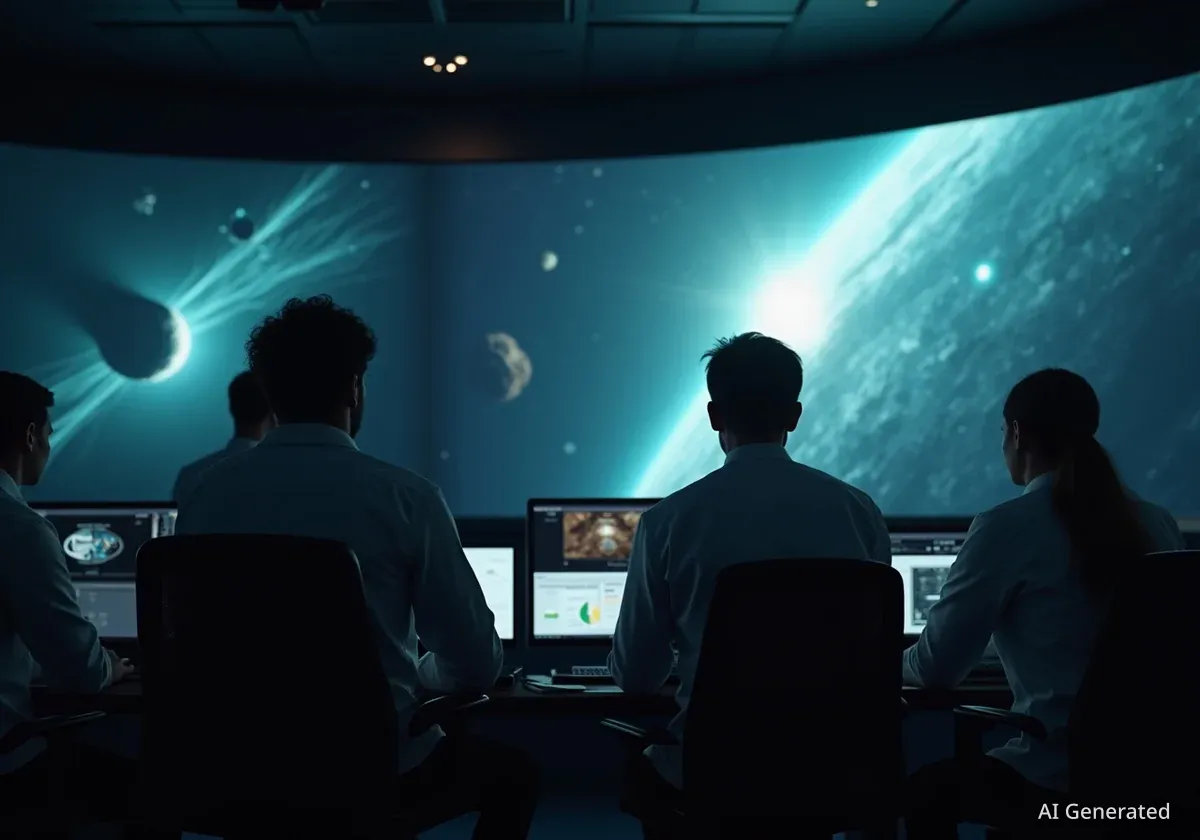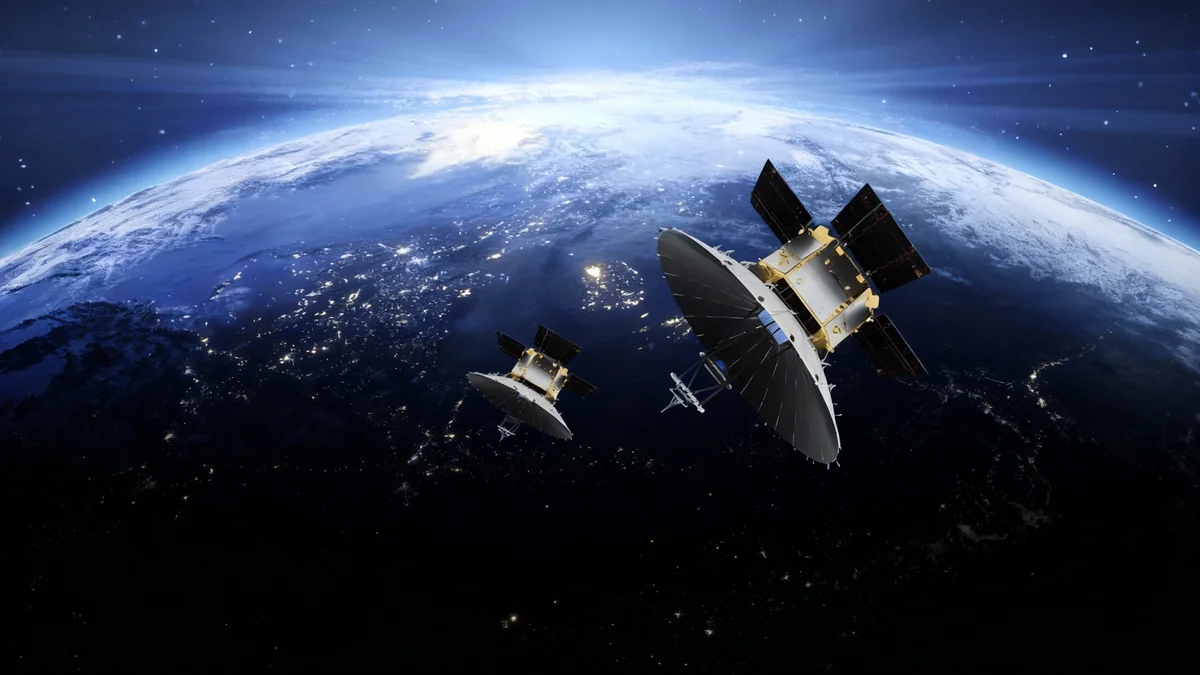Maryland-based spacecraft manufacturer Quantum Space has announced a June launch for its Ranger Prime vehicle, a demonstration mission designed to prove its technology for the U.S. government's Golden Dome defense architecture. The launch from Vandenberg Space Force Base will serve as a critical test for the company's core systems before it proceeds with a larger, more capable fleet.
The mission marks a significant step in the company's strategic shift toward serving national security needs in orbit. By validating its avionics, propulsion, and targeting systems, Quantum Space aims to position itself as a key supplier for a new generation of maneuverable military spacecraft.
Key Takeaways
- Quantum Space will launch its Ranger Prime demonstration spacecraft in June from Vandenberg Space Force Base.
- The mission is a precursor to the larger Ranger 2000 vehicle, intended for the U.S. Golden Dome space architecture.
- Ranger Prime will test core avionics, chemical propulsion, and remote proximity-targeting systems.
- The company has invested heavily in defense capabilities, including a $40 million acquisition of Phase Four's propulsion technology.
A Strategic Pivot to Defense
Quantum Space was initially founded with a focus on providing commercial services in cislunar space—the area between Earth and the Moon. The company envisioned a fleet of spacecraft offering services like space situational awareness (SDA), advanced weather forecasting, and communications.
However, the firm quickly recognized that the capabilities required for complex cislunar operations, particularly advanced maneuverability, were also in high demand for military applications in lower orbits. This realization prompted a pivot toward a dual-use strategy, targeting both commercial and government clients.
What is the Golden Dome Initiative?
The Golden Dome initiative, established by an executive order in January, is a U.S. government program aimed at developing a resilient and highly maneuverable satellite architecture for national security. The program seeks to deploy a constellation of spacecraft capable of rapid repositioning, inspection, and other dynamic operations to counter emerging threats in orbit.
This strategic shift has been backed by significant investment and key personnel changes. The company recently hired Richard Matlock, a veteran of the Missile Defense Agency, to bolster its defense expertise. Furthermore, Quantum Space spent $40 million to acquire Phase Four, a company specializing in advanced electric propulsion technology. This acquisition is central to its long-term plans for highly agile spacecraft.
The Ranger Prime Demonstration Mission
The upcoming launch in June is the first major public demonstration of Quantum's progress. The mission, designated Ranger Prime, will lift off from Vandenberg Space Force Base in California. While smaller than the planned operational vehicles, it carries the foundational technology for the entire future fleet.
The primary objectives for Ranger Prime include:
- Testing the spacecraft's core avionics package under real-world orbital conditions.
- Validating the performance of its chemical propulsion system for orbital maneuvers.
- Demonstrating its remote proximity-targeting capabilities, a crucial function for future defense operations.
This flight is essentially a technological proving ground. Success will pave the way for the development and launch of the company's more advanced platforms, which will be built upon the same core systems tested by Ranger Prime.
Ranger Prime Mission at a Glance
- Launch Date: June 2025
- Launch Site: Vandenberg Space Force Base
- Key Technologies Tested: Core avionics, chemical propulsion, remote proximity-targeting
- Purpose: Technology demonstration for the future Ranger fleet
Introducing the Ranger 2000
While Ranger Prime prepares for its flight, Quantum Space is concurrently developing its next-generation platform, the Ranger 2000. This larger and more capable spacecraft is being designed specifically to meet the anticipated requirements of the Golden Dome program.
The Ranger 2000 will feature significant upgrades, including larger solar arrays for increased power and a substantial payload capacity of up to 2,000 kilograms. The first launch of a Ranger 2000 is planned to take place before the end of 2026. This mission will aim to demonstrate more advanced capabilities vital for military use.
Future versions of the Ranger 2000 will also incorporate the electric propulsion technology acquired from Phase Four. This will grant the spacecraft superior maneuverability and efficiency, allowing it to perform a wide range of missions over an extended operational lifespan.
Meeting the Growing Demand for Orbital Flexibility
The push for highly maneuverable spacecraft reflects a new reality in space, where static, predictable orbits are no longer sufficient for national security. The ability to move satellites quickly to new locations for observation or to respond to threats is becoming a critical requirement for the U.S. Space Force.
Quantum Space aims to fill this need by providing versatile platforms that can be adapted for various missions. Sue Hall, the company's Chief Operating Officer, emphasized this focus on adaptability.
“We’re really just offering up operational flexibility for the warfighter. What we’ve done on Ranger to date is directly applicable to many of the other applications that they’d like to have for Golden Dome.”
According to Hall, Quantum currently has the capacity to produce tens of Ranger 2000 spacecraft annually. However, the company is already exploring ways to expand its manufacturing capabilities to meet what it anticipates will be a significant demand from the Space Force in the coming years.
As the June launch of Ranger Prime approaches, the space and defense industries will be watching closely. The mission's outcome will not only determine the trajectory of Quantum Space but could also signal the readiness of a new generation of agile spacecraft designed to secure American interests in orbit.





